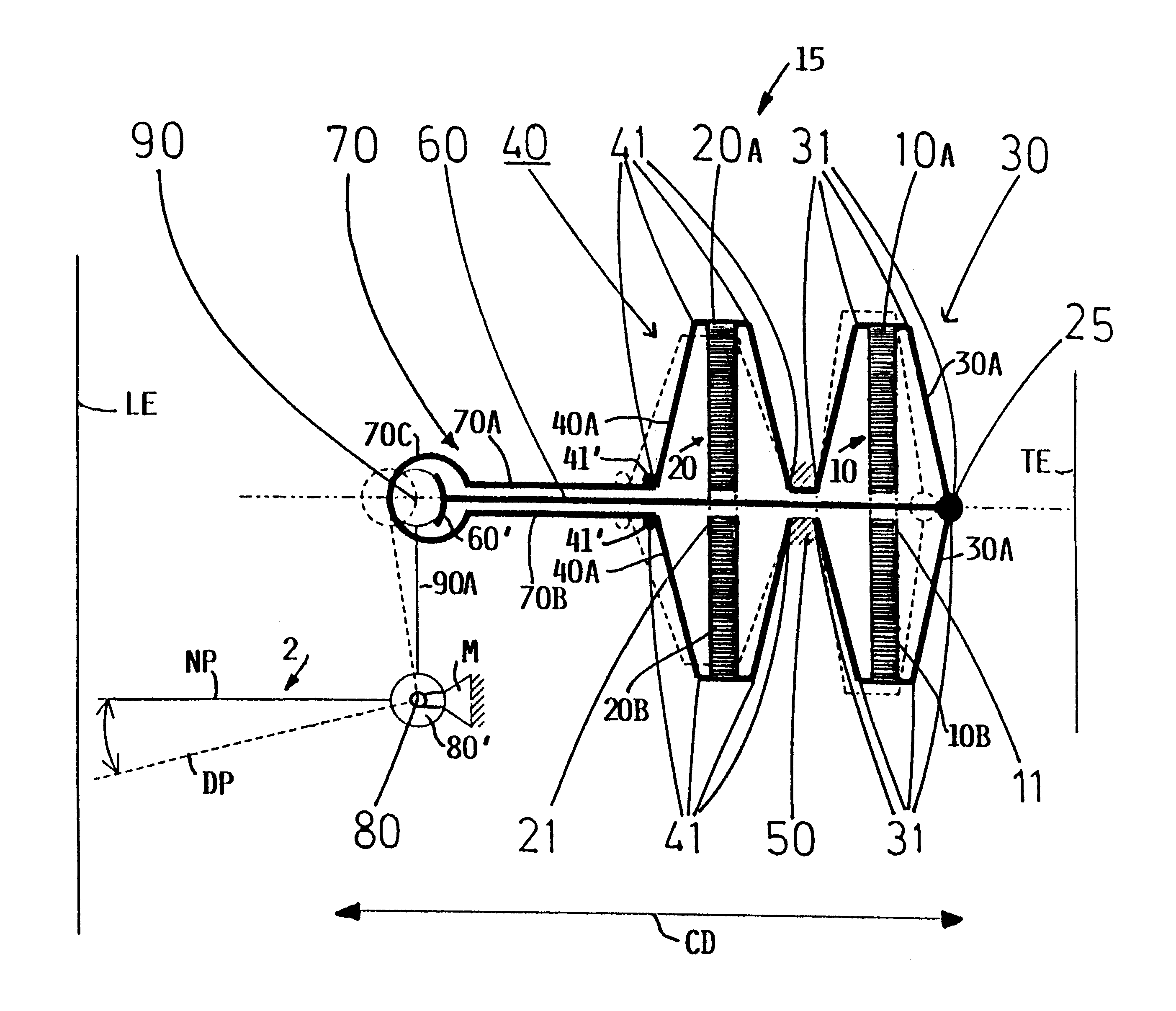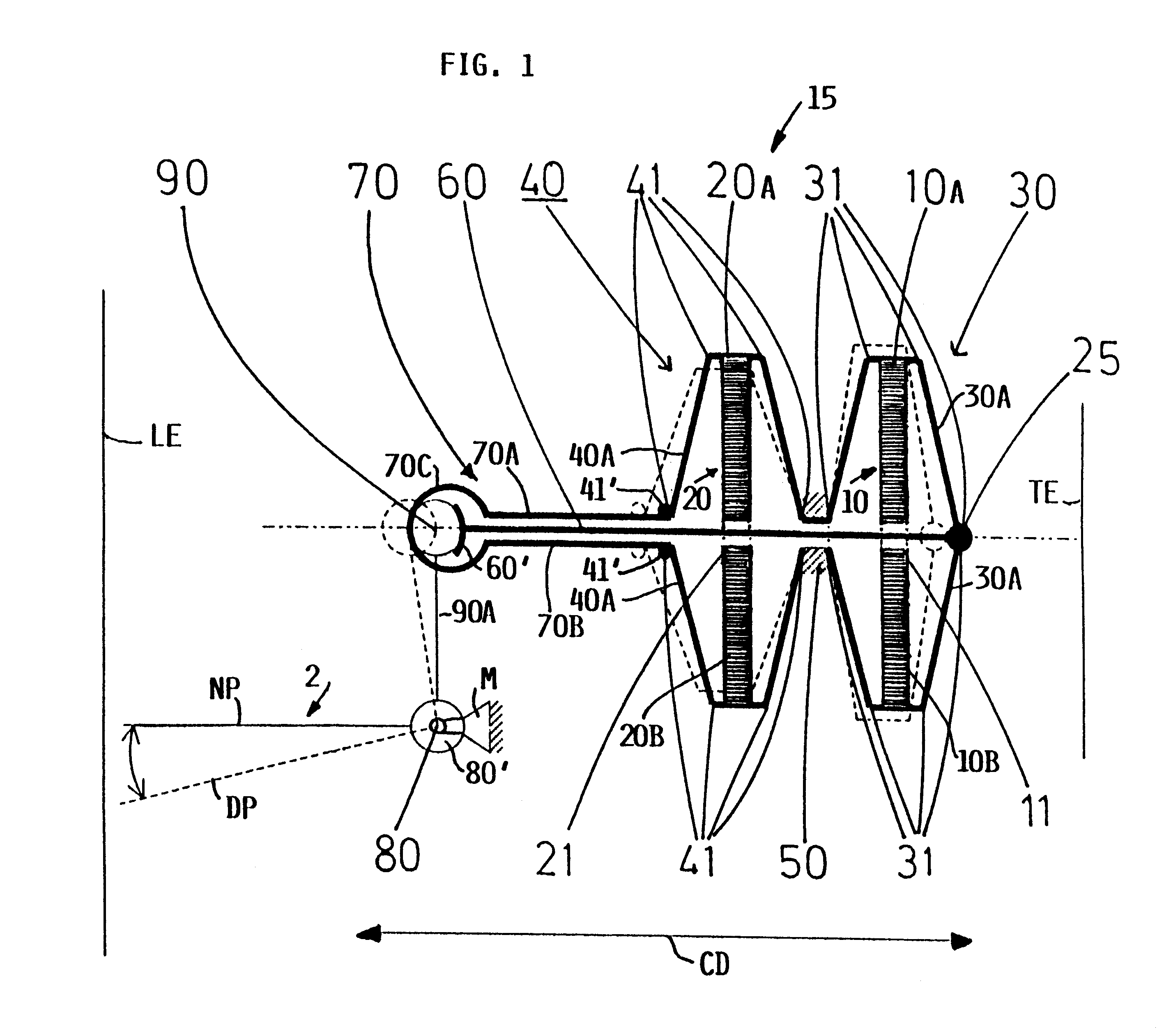Aerodynamic component with a leading edge flap
a leading edge and component technology, applied in the direction of aircraft power plants, transportation and packaging, aircraft, etc., can solve the problems of unoptimized aerodynamics in certain sections or areas, unoptimized is the possibility of dynamic stall, and the design and construction of the rotor blade of the helicopter requires numerous compromises, etc., to achieve easy exchangeability of the nose flap, high adjustment speed, and structural simplicity
- Summary
- Abstract
- Description
- Claims
- Application Information
AI Technical Summary
Benefits of technology
Problems solved by technology
Method used
Image
Examples
Embodiment Construction
The sectional view of FIG. 1 shows schematically the present piezo-drive 15 with piezo-drive elements 10 and 20 extending longitudinally of an aerodynamic component not shown. The chord plane of the aerodynamic component extends perpendicularly to the drawing sheet and to the sectional plane. The aerodynamic component is, for example a helicopter rotor blade 1 shown in FIGS. 2 and 3. A leading edge or nose flap 2 is shown in FIG. 1 only as a horizontal line NP representing the neutral position of the nose flap 2.
The first piezo-element 10 is positioned closer to a trailing edge TE while the second piezo-element 20 is positioned between the first element and the leading edge LE. Thus, the two piezo-drive elements 10 and 20 forming a pair are oriented according to the invention in the chord direction of the aerodynamic component such as a helicopter rotor blade 1 shown in FIG. 2. In FIG. 1, the blade length direction extends perpendicularly to the chord direction CD. Thus, the element...
PUM
 Login to View More
Login to View More Abstract
Description
Claims
Application Information
 Login to View More
Login to View More - R&D
- Intellectual Property
- Life Sciences
- Materials
- Tech Scout
- Unparalleled Data Quality
- Higher Quality Content
- 60% Fewer Hallucinations
Browse by: Latest US Patents, China's latest patents, Technical Efficacy Thesaurus, Application Domain, Technology Topic, Popular Technical Reports.
© 2025 PatSnap. All rights reserved.Legal|Privacy policy|Modern Slavery Act Transparency Statement|Sitemap|About US| Contact US: help@patsnap.com



